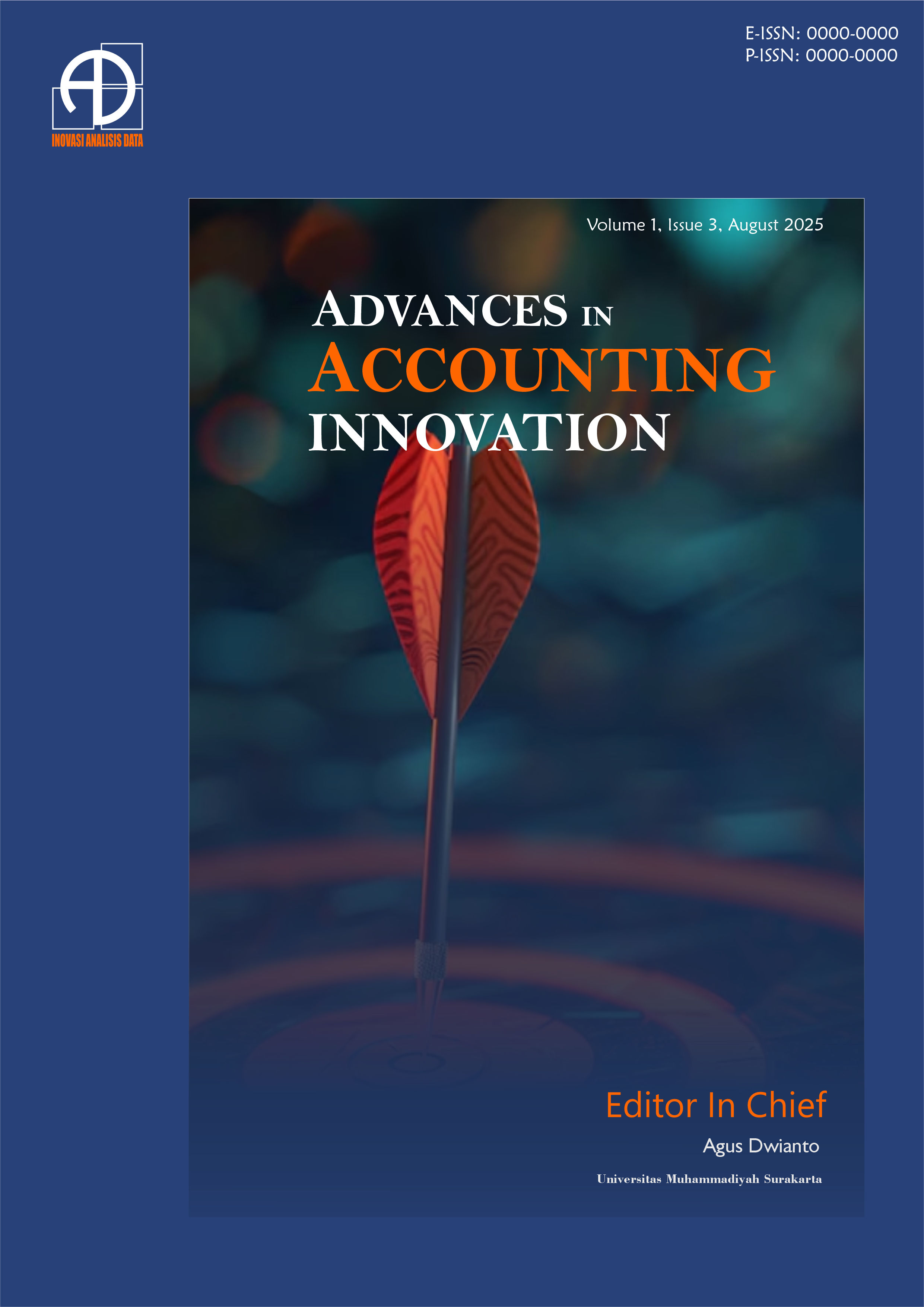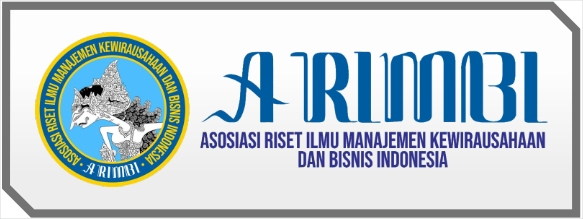The role of institutional pressure in driving carbon integration within the Southeast Asian industrial sector
 DOI:
DOI:
https://doi.org/10.69725/aai.v2i1.229
Keywords:
Carbon governance, ESG, Legitimacy, Sustainability strategy, Institutional pressureAbstract
Objective: Specifically this study seeks to assess the effect of institutional pressure and legitimacy motivation on carbon intelligence integration (CII), and the moderating role of carbon governance maturity (CGM) in high and low carbon intensive industries.
Methods: Explanatory approach quantitative manufacturing-energy sectors Southeast Asia regression moderation analysis robustness checks alternative dependent variables empirical validation.
Results: The influence of carbon intelligence integration (CII) was highly and significantly influenced by institutional pressure and legitimacy motivation. This relationship was significantly strengthened by the moderating role of carbon governance maturity (CGM), especially at high governance quality levels. In terms of sectoral analysis, the positive impact of ESG performance on stock returns was stronger in the case of firms with lower carbon intensity as well as EPS was consistently found to be a reliable predictor of stock returns across sectors.
Novelty: This study is first of its kind to assess the contextual determinants of the relationship between institutional pressure, legitimacy motivation and carbon intelligence integration by proposing and examining carbon governance maturity (CGM) as a potential moderator. Its unique approach is the cross-sectional comparison of high- and low-carbon sectors that sheds light on the contrasting behavioral effects of ESG and earnings variables under differing environmental and sectoral intensities.
Research Implications: The results highlight the need to prioritize governance recommendations to better enable carbon intelligence. Sectorial and governance maturity-based ESG disclosure sub benchmarks should be used by policymakers and business leaders to harmonize ESG reporting standards, leading to improved capital market reactions, sustainability practices and long-term firm value. By focusing on transition economies where challenges for carbon disclosure are acute, the study provides evidence for differentiated ESG regulation.
Downloads
References
Alsaifi, K., Elnahass, M., & Salama, A. (2020). Market responses to firms’ voluntary carbon disclosure: Empirical evidence from the United Kingdom. Journal of Cleaner Production, 262, 121377. https://doi.org/https://doi.org/10.1016/j.jclepro.2020.121377
Amel-Zadeh, A., & Tang, Q. (2025). Managing the shift from voluntary to mandatory climate disclosure: The role of carbon accounting. The British Accounting Review, 57(2), 101594. https://doi.org/https://doi.org/10.1016/j.bar.2025.101594
Ascui, F., & Lovell, H. (2012). Carbon accounting and the construction of competence. Journal of Cleaner Production, 36, 48–59. https://doi.org/https://doi.org/10.1016/j.jclepro.2011.12.015
Borghei, Z. (2021). Carbon disclosure: a systematic literature review. Accounting & Finance, 61(4), 5255–5280. https://doi.org/https://doi.org/10.1111/acfi.12757
Bui, B., Moses, O., & Houqe, M. N. (2020). Carbon disclosure, emission intensity and cost of equity capital: multi-country evidence. Accounting & Finance, 60(1), 47–71. https://doi.org/https://doi.org/10.1111/acfi.12492
Butler, T. (2011). Compliance with institutional imperatives on environmental sustainability: Building theory on the role of Green IS. The Journal of Strategic Information Systems, 20(1), 6–26. https://doi.org/https://doi.org/10.1016/j.jsis.2010.09.006
Callery, P. J., & Kim, E.-H. (2024). Set & Done? Trade-offs between Stakeholder Expectation and Attainment Pressures in Corporate Carbon Target Management. Journal of Management Studies, n/a(n/a). https://doi.org/https://doi.org/10.1111/joms.13140
Carpenter, V. L., & Feroz, E. H. (2001). Institutional theory and accounting rule choice: an analysis of four US state governments’ decisions to adopt generally accepted accounting principles. Accounting, Organizations and Society, 26(7), 565–596. https://doi.org/https://doi.org/10.1016/S0361-3682(00)00038-6
Daumas, L. (2024). Financial stability, stranded assets and the low-carbon transition – A critical review of the theoretical and applied literatures. Journal of Economic Surveys, 38(3), 601–716. https://doi.org/https://doi.org/10.1111/joes.12551
de Villiers, C., Rinaldi, L., & Unerman, J. (2014). Integrated Reporting: Insights, gaps and an agenda for future research. Accounting, Auditing & Accountability Journal, 27(7), 1042–1067. https://doi.org/10.1108/AAAJ-06-2014-1736
Di Vaio, A., Chhabra, M., Zaffar, A., & Balsalobre-Lorente, D. (2025). Accounting and Accountability in the Transition to Zero-Carbon Energy for Climate Change: A Systematic Literature Review. Business Strategy and the Environment, 34(5), 5925–5946. https://doi.org/https://doi.org/10.1002/bse.4282
Färe, R., Grosskopf, S., & Lovell, C. A. K. (1984). The Structure of Technical Efficiency BT - Topics in Production Theory (F. R. Førsund (ed.); pp. 81–90). Palgrave Macmillan UK. https://doi.org/10.1007/978-1-349-07123-4_6
Ghosh, R., & Wolf, S. (2021). Hybrid governance and performances of environmental accounting. Journal of Environmental Management, 284, 111995. https://doi.org/https://doi.org/10.1016/j.jenvman.2021.111995
Hartmann, F., Perego, P., & Young, A. (2013). Carbon Accounting: Challenges for Research in Management Control and Performance Measurement. Abacus, 49(4), 539–563. https://doi.org/https://doi.org/10.1111/abac.12018
Krivogorsky, V. (2024). Sustainability reporting with two different voices: The European Union and the International Sustainability Standards Board. Journal of International Accounting, Auditing and Taxation, 56, 100635. https://doi.org/https://doi.org/10.1016/j.intaccaudtax.2024.100635
Luo, L., & Tang, Q. (2014). Does voluntary carbon disclosure reflect underlying carbon performance? Journal of Contemporary Accounting & Economics, 10(3), 191–205. https://doi.org/https://doi.org/10.1016/j.jcae.2014.08.003
Mio, C., Agostini, M., & Scarpa, F. (2024). International Evolution of Non-financial Disclosure and Sustainability Reporting BT - Sustainability Reporting: Conception, International Approaches and Double Materiality in Action (C. Mio, M. Agostini, & F. Scarpa (eds.); pp. 21–61). Springer Nature Switzerland. https://doi.org/10.1007/978-3-031-58449-7_3
Monroy-Osorio, J. C. (2024). Charting the digital route to net-zero: A framework for sustainable industry practices. Cleaner Logistics and Supply Chain, 13, 100191. https://doi.org/https://doi.org/10.1016/j.clscn.2024.100191
Nicolo, G., Zampone, G., Sannino, G., & Polcini, P. T. (2025). Ready for Change After the Omnibus Package? Early Compliance With the European Sustainability Reporting Standards and Its Key Determinants in the New Regulatory Era. Business Strategy and the Environment, n/a(n/a). https://doi.org/https://doi.org/10.1002/bse.70054
Pellegrino, C., & Lodhia, S. (2012). Climate change accounting and the Australian mining industry: exploring the links between corporate disclosure and the generation of legitimacy. Journal of Cleaner Production, 36, 68–82. https://doi.org/https://doi.org/10.1016/j.jclepro.2012.02.022
Ratnatunga, J., & Balachandran, K. R. (2013). Carbon Emissions Management and the Financial Implications of Sustainability BT - Corporate Sustainability (P. Taticchi, P. Carbone, & V. Albino (eds.); pp. 59–87). Springer Berlin Heidelberg. https://doi.org/10.1007/978-3-642-37018-2_3
Saka, C., & Oshika, T. (2014). Disclosure effects, carbon emissions and corporate value. Sustainability Accounting, Management and Policy Journal, 5(1), 22–45. https://doi.org/10.1108/SAMPJ-09-2012-0030
Shrestha, P., Choi, B., & Luo, L. (2023). Carbon Management System Quality and Corporate Financial Performance. The International Journal of Accounting, 58(01), 2350001. https://doi.org/10.1142/S1094406023500014
Spangler, K., Smithwick, E. A. H., Buechler, S., & Baka, J. (2024). Just energy imaginaries? Examining realities of solar development on Pennsylvania’s farmland. Energy Research & Social Science, 108, 103394. https://doi.org/https://doi.org/10.1016/j.erss.2023.103394
Strauß, N., & Šimunović, D. (2025). Communicating net-zero: A conceptual model for effective strategic communications. Public Relations Review, 51(3), 102580. https://doi.org/https://doi.org/10.1016/j.pubrev.2025.102580
Street, C. T., & Meister, D. B. (2004). Small Business Growth and Internal Transparency: The Role of Information Systems. MIS Quarterly, 28(3), 473–506. https://doi.org/10.2307/25148647
Suchman, M. C. (1997). Managing Legitimacy: Strategic and Institutional Approaches. Academy of Management, 20(3), 40. https://doi.org/https://doi.org/10.2307/258788
Vitale, G., Cupertino, S., Schiuma, G., & Troise, C. (2025). Investigating How Mandatory Sustainability Reporting Influences Corporate Governance Effects on ESG Performance: From Obligation to Impact for Sustainable Development. Corporate Social Responsibility and Environmental Management, n/a(n/a). https://doi.org/https://doi.org/10.1002/csr.70025
Downloads
Published
Issue
Section
License
Copyright (c) 2025 Yunaita Rahmawati (Author)

This work is licensed under a Creative Commons Attribution-ShareAlike 4.0 International License.
Advances in Accounting Innovation (AAI) © 2024 by Inovasi Analisis Data is licensed under CC BY-SA 4.0



























